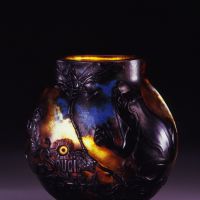By the end of the 19th century, the art scene within European countries had fully flourished. New varied forms of expression — introduced by artists such as Paul Gauguin, Émile Gallé and Alphonse Mucha — challenged traditional art conventions, and through experimentation with style and color, modern art emerged.
Though Gauguin, Gallé and Mucha worked to very different styles, they shared some curious similarities. Motifs were alike and each artist rejected realism and moral ties to art, focusing instead on symbolism, and the decadent and pessimistic artists' social scene that became known as fin de siècle.
When these artists' works are viewed together and considered in the light of the social changes brought about by industrialization, their similarities comment on the general mood of that period in France's history; till Nov. 23.
Fuchu Art Museum; (03) 5777-8600; 1-3 Asama-cho, Fuchu-shi; 15-min walk from the North Exit of Higashi-fuchu Station, Keio line. 10 a.m.-5 p.m. ¥900. Closed Mon.; open holidays and closed the following day. www.city.fuchu.tokyo.jp/art.

















With your current subscription plan you can comment on stories. However, before writing your first comment, please create a display name in the Profile section of your subscriber account page.